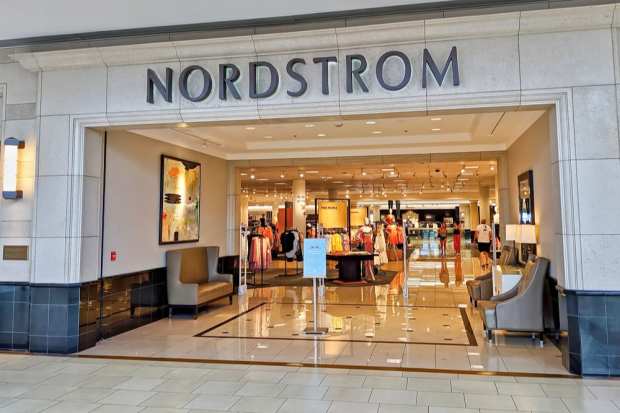Nordstrom Earnings Expected To Show Digital Momentum

Nordstrom will report earnings Tuesday (Aug. 25), an event that will be notable for the department store category and the mall sector, as one of the fallen icons of U.S. retailing claws its way out of the ditch created by the pandemic.
Analysts aren’t expecting predicting any surprises from the 378-store chain, which laid off an unspecified number of corporate and sales staff in early July. The telling signs to watch will be the effect deep discounting has had on the firm’s profits, the amount of business the company has shifted to digital channels and the chain’s take on what has been a disappointing back-to-school season.
Many analysts have speculated that discounts will have taken a toll on the company’s performance as it reopens stores in some geographies and waits on reopening orders in others.
“Increased digital sales are likely to have aided the quarterly performance,” says Yahoo Finance in its earnings preview. “Markedly, the company has been investing in technology and boosting e-commerce presence. This along with efforts to improve supply-chain and brand marketing is likely to have served as upsides.”
Will it be enough to convince investors that the company has a bright post-pandemic future? The answer to that question will hinge at least in part on the eCommerce percentage. Its Q1 reflected the initial closing of its physical stores and “ongoing growth of its $5 billion e-commerce business,” according to the company. For the first quarter ended May 2, 2020, net sales decreased 40 percent from 2019.
Nordstrom discounts online have gone as deep as 80 percent in the early days of the pandemic. It is currently running its anniversary sale with discounts that are more conservative. In-store the company is pushing styling services for its anniversary as well as virtual clienteling styling by appointment.
CEO Jamie Nordstrom told an industry forum in early August that Nordstrom’s eCommerce sales represented about 35 percent of the total business. “We see it rapidly growing to more of a 50-50 business maybe by the end of this year,” said Nordstrom. “We are focused on digital appointments. Our sales people are doing a lot more virtual appointments, on a phone call or Zoom.”
A recent blog post from Chief Supply Chain Officer Alexis DePree shows that the company had shifted to 100 percent digital sales for part of Q1, and pushed its in-store fulfillment from 20 percent to 50 percent of the total sales.
“I think the new normal will be more of what we have today. We believe that many of the retail trends we’re seeing are just an acceleration of existing trends that we had been investing towards,” DePree said in the blog post, which was a Q&A with NRF Vice President of Supply Chain and Customs Policy Jonathan Gold done as part of a virtual conference. “What’s consistent is that customers still seek great experiences and products regardless of how they choose to shop. Our digital and physical and networks complement each other, and supply chain plays a huge role in blending the two, but that requires new levels of flexibility and responsiveness. Supply chains of old were designed for scale, cost and repeatability. Those elements still matter but the importance of flexibility cannot be overstated. The change curve is much faster and more dynamic, and our younger customers have grown up with that rate of change as the norm, so we need to view that as our new normal and continue to adapt.”
